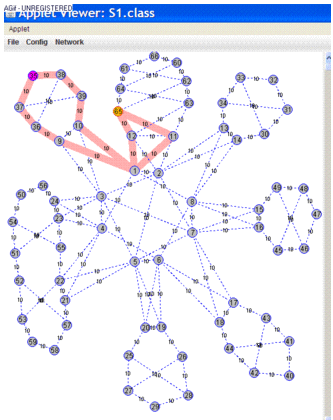Equal-cost multi-path routing

Equal-cost multi-path routing (ECMP) is a routing strategy where next-hop packet forwarding to a single destination can occur over multiple "best paths" which tie for top place in routing metric calculations. Multi-path routing can be used in conjunction with most routing protocols, because it is a per-hop decision limited to a single router. It can substantially increase bandwidth by load-balancing traffic over multiple paths; however, there may be significant problems in deploying it in practice.[1] RFC 2991 discusses multi-path routing in general.
In 2014, the Institute of Electrical and Electronics Engineers (IEEE) incorporated Equal Cost Multiple Paths (ECMP) or IEEE standard 802.1Qbp into IEEE 802.1Q-2014 for Shortest Path Bridging. Specifying the forward and reverse paths used for unicast and multicast traffic in shortest path bridging as symmetric insuring flows on deterministic paths, resolving configuration complexities, management functionality and performance issues within original standards implementations.[2][3][4][5][6]
History
In the past, load balancing by per-packet multipath routing was generally deprecated due to the impact of rapidly changing latency, packet reordering and maximum transmission unit (MTU) differences within a network flow, which could disrupt the operation of many Internet protocols, most notably TCP and path MTU discovery. RFC 2992 analyzed one particular multipath routing strategy involving the assignment of flows to bins by hashing flow-related data in the packet header, which is designed to avoid these problems by sending all packets from any particular network flow down a single deterministic path, while balancing multiple flows over multiple paths in general.[7]
See also
References
- ↑ "Multipath Issues in Unicast and Multicast Next-Hop Selection". Retrieved 16 December 2013.
- ↑ "802.1Q-2014 - Bridges and Bridged Networks". IEEE. 2014. Retrieved 2015. Check date values in:
|access-date=(help) - ↑ "IEEE Standard for Local and Metropolitan Area Networks---Virtual Bridged Local Area Networks - Amendment: Equal Cost Multiple Paths (ECMP)".
- ↑ "Alcatel-Lucent, Avaya, Huawei, Solana and Spirent Showcase Shortest Path Bridging Interoperability". Huawei. 7 September 2011. Retrieved 11 September 2011.
- ↑ An improved shortest path bridging protocol for Ethernet backbone network. IEEE Xplore. 3 March 2011. doi:10.1109/ICOIN.2011.5723169. ISBN 978-1-61284-661-3. ISSN 1976-7684. Retrieved 11 September 2011.
- ↑ "Lab Testing Summary Report; Data Center Configuration with SPB" (PDF). Miercom. September 2011. Retrieved 25 December 2011.
- ↑ "Analysis of an Equal-Cost Multi-Path Algorithm".
External links
- Etutorials: Equal-Cost Multi-Path (ECMP) Routing
- Paris-Traceroute: traceroute for ECMP networks
- Dublin-Traceroute: NAT-aware traceroute for ECMP networks